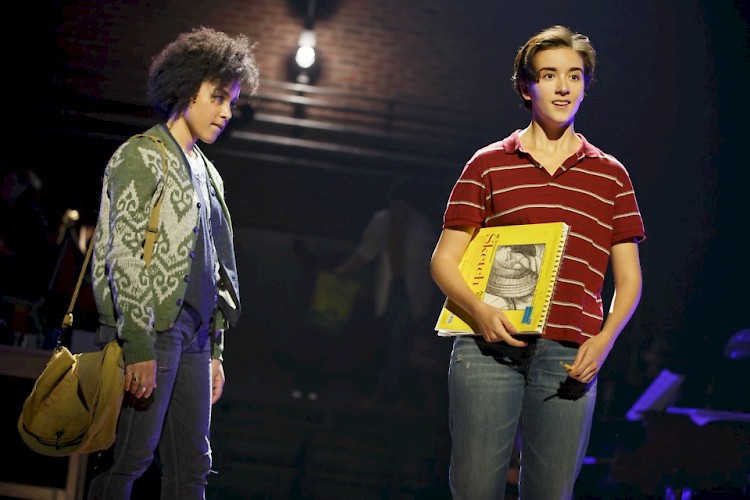I'm writing this a couple of weeks after seeing the show because after a kind of slow period for me, theater-wise, I have suddenly been going to a lot of shows, and I'm having to learn to keep up with my writing afterward.
And also, this is a really tough subject to write about.
The show in question is Mike Daisey's other new show, a part of Shotgun's Blast Festival. I wrote about Daisey's previous show, "The End of Journalism," when we saw it a week before. I also discussed the Blast Festival, so we'll skip that here, too. In many ways, although it continues some of the themes of "The End of Journalism," and said decline in journalism certain contributes to the not-normal matters in this show, it is really very much a follow-on to the show Daisey performed much of last year, "The Trump Card."
What's Not Normal?
Because indeed, the subject hanging over much of this latest effort is not just the recent American presidential election, but also the kind of behavior the outcome represents. Roy Cohn makes a return appearance in this new show, largely because he was such a huge influence on Donald Trump.Daisey finds himself in something of a pickle with this effort. On the one hand, it's tempting to tell us "I told you so," because he did. He told us what Trump represented and where it all came from, and the country elected him anyway. But on a deep, fundamental level, he is also trying to tell us that the autocracy Trump represents is not normal, and can't be allowed to be seen as normal.
Some of the material kind of fills in holes in Daisey's life story. I've been following him since seeing "21 Dog Years" many years back at Berkeley Rep, so it was fun to hear some more stories of his early theater years in Seattle. His portrayal of a Czech director (and Czechs in general) is amusing, as is his description of auditioning for and performing in a play called "Fernando Krapp Wrote Me This Letter," which sounds just awful, yet bizarrely amusing. And honeymooning in Rome with his now ex-wife. So there is definitely material in here that has promise: these things are not normal.
The Problem(s)
There are several difficulties with this show, however. One is that it's brand new, and after seeing two brand new monologues in a row, I have to say that I like them better when they've got a little more mileage on them. Daisey always speaks somewhat extemporaneously, just working from a few pages of hand-written notes. So there is always a bit of spontaneity to the show, which is good. On the other hand, spontaneity works better as part of a familiar act, and these new shows don't have that comfort level for him yet.What's particularly missing from this show is a story arc. It's episodic, but doesn't have the same sense of flow that I consider the hallmark of a Mike Daisey monologue. It's probably just a matter of him not having found the right connection, and that will come. But in the meantime, it just feels a little awkward.
And frankly, I think there's a reason underlying the discomfort, beyond unfamiliarity with the particular show: I don't think Mike is comfortable with the message. He's fundamentally telling the audience about things they already know, things they are not comfortable with, and things they are already trying to come to grips with. So on some level it feels like therapy for the group, but instead of the patients coming to an understanding of what is wrong and what they need to do about it, it sort of feels like the therapist is kind of apologetically writing and rewriting the prescription as we tear them up and throw them away. In a room full of people who are already outraged, it's hard to incent them to act or change.
The Bottom Line
The show has some good bits and some promise. I wish I'd written it up when it was fresher in my mind so I could point to more specifics. But really, I came away thinking I hadn't really gotten that much out of it. I got a few phrases (and truly, I keep seeing and hearing "this is not normal" in way too many contexts lately). Maybe it's just because I've now heard Mike sounding the alarm three different times in the last six months, and I'm a bit numb.But ultimately he is right: we can't let this absurd and awful situation become normalized. We have to resist that every bit as much as we resist specific actions and attitudes that offend us. So in a weird way, the phrase "this is not normal" is going to have to be a normal thing for a while. And that's not a comfortable place to be.
So it's definitely not my favorite Mike Daisey piece, by a long shot. I suppose it might ultimately be the most important one, but like many medicines and prescriptions, what's good for us isn't always something we like.
It's been interesting to see a couple of early-stage works from Mike Daisey this year, but on the whole, I think I'll let other people attend the early workshops and try to see more polished presentations.

